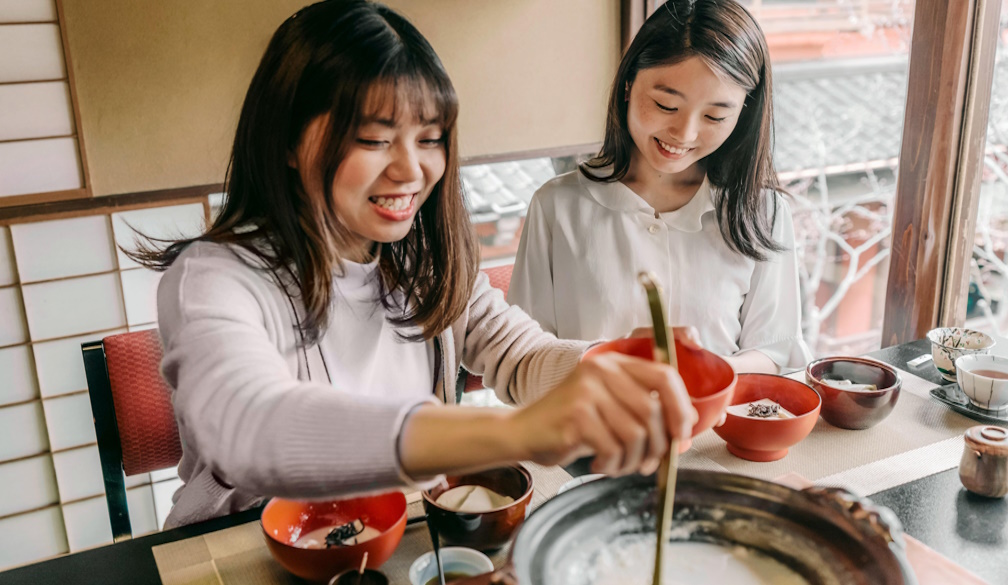How to Host an Unforgettable Japanese Hot Pot (Nabe) Night: A Step-by-Step Guide

There are few meals as joyful and communal as a Japanese hot pot, or nabe. It’s more than just dinner; it’s a social event where friends and family gather around a simmering pot, cooking and sharing food together. It’s cozy, interactive, and the perfect way to create lasting memories on a cool evening.
Hosting your own nabe night might seem daunting, but it’s surprisingly simple and incredibly rewarding. This step-by-step guide will walk you through everything you need to know to host a hot pot party that your guests will be talking about for weeks.
Step 1: Choose Your Centrepiece - The Donabe
The heart and soul of any nabe night is the vessel it’s cooked in. For a truly authentic experience, there is no substitute for a traditional Donabe (Hot Pot).
This beautiful Japanese clay pot is designed for slow, even cooking right at the table. Its superior heat retention keeps the broth gently simmering, allowing guests to cook their ingredients at their own pace. The donabe isn't just cookware; it's the centrepiece that brings everyone together.
Step 2: Prepare a Flavourful Broth
The broth is the foundation of your hot pot. While you can find pre-made nabe soup bases, making your own is easy and delicious. A classic, simple choice is a kombu dashi (kelp broth).
- Simple Dashi: Gently wipe a large piece of kombu (dried kelp) with a damp cloth. Place it in your donabe with about 6-8 cups of cold water and let it soak for at least 30 minutes. Heat it over a medium flame and remove the kombu just before the water comes to a full boil. Season the broth with soy sauce, sake, and mirin to taste.
Step 3: Gather Your Ingredients
The beauty of nabe is its versatility. You can include almost anything! The key is to have a wide variety of colours, textures, and flavours. Arrange everything artfully on platters for guests to pick and choose from.
- Proteins: Thinly sliced beef or pork (for shabu-shabu), chicken meatballs, firm tofu, fried tofu puffs (aburaage), prawns, or scallops.
- Vegetables: Napa cabbage, bok choy, chrysanthemum greens (shungiku), sliced carrots, leeks, and a variety of mushrooms like shiitake, enoki, and shimeji.
- Finishing Touches: Udon noodles, glass noodles, or blocks of mochi (rice cakes) to add at the end.
Step 4: Set the Perfect Table
Since nabe is a communal meal, the table setting is key. Each guest will need their own personal bowl to assemble their creations. Japanese Deep Plates are perfect for this, as their depth can hold broth, noodles, and all the delicious ingredients guests pull from the pot. Also provide:
- A set of chopsticks for each person.
- Small dipping bowls for sauces like ponzu (citrus-soy sauce) and goma-dare (creamy sesame sauce).
- A ladle and a slotted spoon for the main pot, so guests can easily serve themselves broth and solids.
Step 5: Add an Appetiser (The Pro Host Move)
To make the evening even more special, consider serving a small appetiser while the hot pot gets simmering. This is a perfect opportunity to bring out another Japanese culinary star: the Hibachi (BBQ Grill). Grilling a few skewers of chicken yakitori or salted asparagus on a tabletop hibachi adds another layer of interactive fun and fills the air with an incredible aroma, setting the stage for the main event.
Step 6: Don't Forget the Shime (The Finishing Course)
Just when you think the meal is over, the best part begins. The shime, or "finish," is where you use the leftover, flavour-infused broth. Once most of the ingredients have been eaten, add a bowl of cooked rice to the remaining broth in the donabe.
Bring it to a simmer, swirl in a beaten egg, and top with sliced scallions. This creates a deeply savoury rice porridge called zosui, the ultimate comfort food and a perfect, no-waste end to an unforgettable meal.
With a little preparation, you can easily host a nabe night that is warm, engaging, and utterly delicious. It’s a meal built for connection, conversation, and the simple joy of sharing good food.
Looking for a reputable retailer and wholesaler of authentic Japanese tableware in Australia? Check out Direct from Japan, They hand-select only the finest Japanese-made ceramics from vetted manufacturers, with all goods directly imported from Japan.









